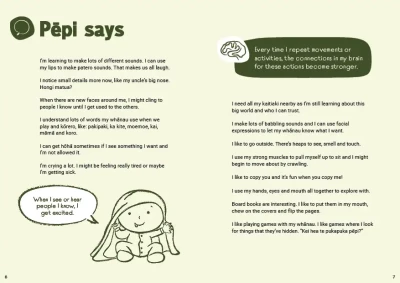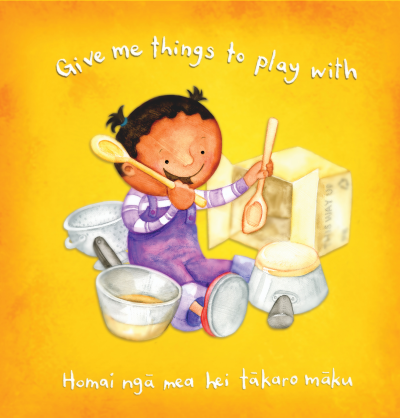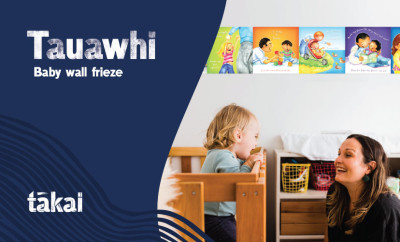
Nesting and stacking
Babies do things over and over to see if the same thing happens. A good activity for this is nesting and stacking objects, like plastic cups.
When parents understand the stage baby is going through, they get better at knowing what activities will appeal to their baby. Remind them that a baby’s mouth is still likely to be their first ‘test zone’.
In the Whakatipu Te Pihinga 2, page 7, pēpi says, ‘I use my hands, eyes and mouth all together to explore with.’
Ask whānau:
- What have you noticed pēpi doing with their hands and fingers lately?
- Have you noticed them using their fingers to explore little details?
- What things are you not happy about them playing with?
- How do you manage that?
Encouraging testing with nesting
Cause-and-effect testing is when baby does something over and over to see if the same thing happens every time. An activity that encourages this is nesting and stacking objects. This is another way to help baby practise problem solving.
Plastic cups that fit inside each other are great for this activity, and they can be safely stacked into a tower. Bring 3 or 4 with you to the visit or ask parents if they have some they’re happy to use.
- How will we introduce them to baby?
Encourage parents' ideas.
- Shall we put them down in front of baby and see if baby approaches them?
- How about we watch and see how baby explores them?
Encouraging exploration
Sometimes adults want to show baby how to play with an activity, for example, ‘Look, baby, these cups fit inside each other, and see, they can be built into a tower!’
The reality is baby won’t go straight to nesting and stacking the cups. They’ll explore them in their own developmentally appropriate way using their senses. They’ll look at them, mouth them and maybe bang them together to make a noise, long before they figure out that they can be nested or stacked.
A parent’s role is to encourage this exploration and show baby how interested they are in what baby is doing.
- How can you show baby that you think it’s interesting too?
- What could you say or do to let them know that?
Offer suggestions if parents need some ideas. We could:
- bang them together to make a noise
- hold them out for baby to grab
- hide them under a cloth to see if baby will look for them.
When baby has had plenty of time to explore the cups, then it might be appropriate to show them what else can be done with them – for example:
- how they fit inside each other and can be tipped out again
- how they can be stacked and knocked over.
Ask whānau:
- What did you notice pēpi doing?
- What else could you use to practise stacking or nesting that would be safe for baby?
Taking time to enjoy baby’s stages
Support parents to enjoy this developmental stage. Help them to slow down and encourage the exploring involved.
Parents can further encourage baby by describing what baby’s doing. Older siblings will probably want to go straight to the ‘nest and stack’ part of this activity, and that’s fine as it will be a reflection of their own stage of development.














